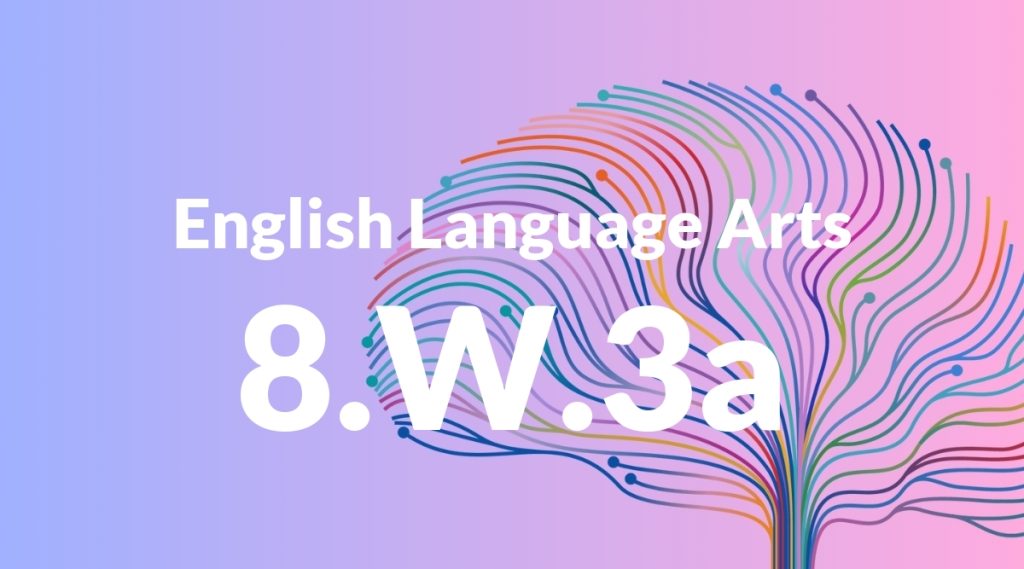Standard: 8.W.3a – Engage and orient the reader by establishing a context and point of view and introducing a narrator and/or characters; organize an event sequence that unfolds naturally and logically.
Grade level: Grade 8
Subject: English Language Arts
Domain: Writing
Teacher Overview
This standard emphasizes the importance of engaging the reader by establishing a clear context and point of view, and introducing a narrator and/or characters. It also focuses on organizing events in a logical sequence. Mastery of this standard is crucial for developing strong narrative writing skills, which are foundational for more advanced writing tasks. Students should have a basic understanding of narrative elements like plot, setting, and character. They should also be familiar with different narrative perspectives and possess fundamental writing skills.
Students will develop the ability to create more sophisticated narratives and analyze literary works with a nuanced understanding of narrative techniques.
Common Misconception 1
Some students may think that a narrative can be effective without a clear sequence of events. This is incorrect because a logical flow helps the reader follow and understand the story.
Intervention 1
Introduce graphic organizers to help students plan their narratives, ensuring they include a clear beginning, middle, and end.
Common Misconception 2
Another common misconception is that the narrator’s perspective is insignificant. This is not true, as the point of view shapes the reader’s interpretation and engagement with the story.
Intervention 2
Use comparative analysis of texts written from different perspectives to illustrate how the narrator’s point of view influences the story.
Prerequisite Knowledge
Students should understand basic narrative elements such as plot, setting, and character development. They should also be familiar with different points of view and have basic writing skills, including sentence structure and paragraph organization.
Subsequent Knowledge
After mastering this standard, students will be able to create more complex narratives, analyze literary works with a deeper understanding of narrative techniques, and apply these skills to other forms of writing such as persuasive and expository essays.
Instructional Activities
- Story mapping exercises
- Writing and peer-reviewing short stories
- Role-playing different characters to understand point of view
- Analyzing narrative structures in popular films or books
- Creating timelines for historical fiction stories
- Writing diary entries from a character’s perspective




